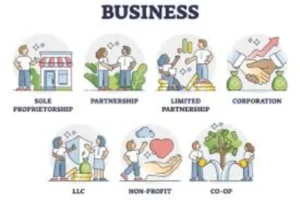How to Blend Retirement Planning with Legacy Goals: Caring for the Next Generation

Retirement is more than a milestone. For many, it’s a time to reflect on what comes next—not just for you, but for your family and future generations. It’s about building both comfort and meaning.
When you plan retirement with legacy in mind, you safeguard your vision, values, and wealth. The goal goes beyond saving for yourself. It becomes about passing on purpose to the next generation.
Here’s how to integrate legacy goals effectively into your retirement strategy.
Define What Legacy Means to You
Legacy is more than a financial plan. It’s a story. It’s how you want to be remembered.
Are you hoping to:
- Support grandchildren’s education?
- Gift your values, not just your money?
- Fund a cause that mattered to you?
- Create a family tradition or share your wisdom?
Before drafting wills or trusts, start by clarifying what matters. That becomes your guiding star.
Balance Between Living and Leaving
A legacy does not mean sacrificing your comfort now. If you give too much away prematurely, you may stretch your resources thin during retirement.
Smart legacy planning balances your lifestyle with your values. Start by securing your own needs. That provides confidence and comfort, and lets your legacy unfold with intention—not sacrifice.
Use Strategic Tools to Shape Your Legacy
1. Wills and Trusts
Wills are more than legal documents. They guide what happens later. Trusts offer ways to manage assets while avoiding probate, protecting privacy, and controlling timing for beneficiaries.
2. Beneficiary Designations
Not all assets pass through a will. IRAs, 401(k)s, and life insurance policies use beneficiary designations. Keep these updated. Align them with your current goals.
3. Legacy Gifts
If giving to causes you care about matters to you, explore charitable trusts, donor-advised funds, or bequests in your will. These tools let you leave a financial gift—and a legacy of values.
Blend Income Planning with Your Legacy
Legacy and retirement goals often intersect. Here’s how to blend them clearly:
- Use life insurance to provide for heirs or charities without disrupting your own income flow.
- Convert part of your traditional IRA to Roth, reducing future tax burdens for beneficiaries. Roth assets pass tax-free and don’t require minimum withdrawals.
- Leave nonprescription assets, like collectibles, meaningful letters, or family heirlooms with values attached—not just financial.
Teach and Empower the Next Generation
A gift alone may not last without knowledge.
- Invite heirs to understand the plan. Share why you chose certain strategies.
- Show them how to manage wealth. Financial risks rise when people inherit without experience.
- Involve them early. Even adult children benefit from clarity and understanding—from trusting relationships to reduced conflict.
This is about passing down wisdom, not just dollars.
Protect Your Legacy from Common Mistakes
- One-size-fits-all estate plans. Your plan must reflect your goals and family needs.
- Not updating beneficiaries. Life changes—marriages, divorces, births—should be reflected in your documents.
- Forgetting taxes. Estate and inheritance taxes can erode your legacy unless you address them.
- Living too frugally. You deserve comfort in retirement. A strong legacy plan does not demand sacrifice.
Why a Planning Partner Makes a Difference
Legacy and retirement blend is complex. You’re balancing comfort, values, taxes, and emotionally charged decisions. Trust and clarity matter.
If you want to craft a plan that stands the test of time and aligns with your values, TruNorth Advisors can guide you through the process—from defining legacy to executing a strategy that honors it.
Conclusion
Retirement planning and legacy are not separate goals. They are parts of the same journey. When planned with care, your legacy becomes your living gift.
Living well today. Leaving with purpose tomorrow. That is true retirement peace.




